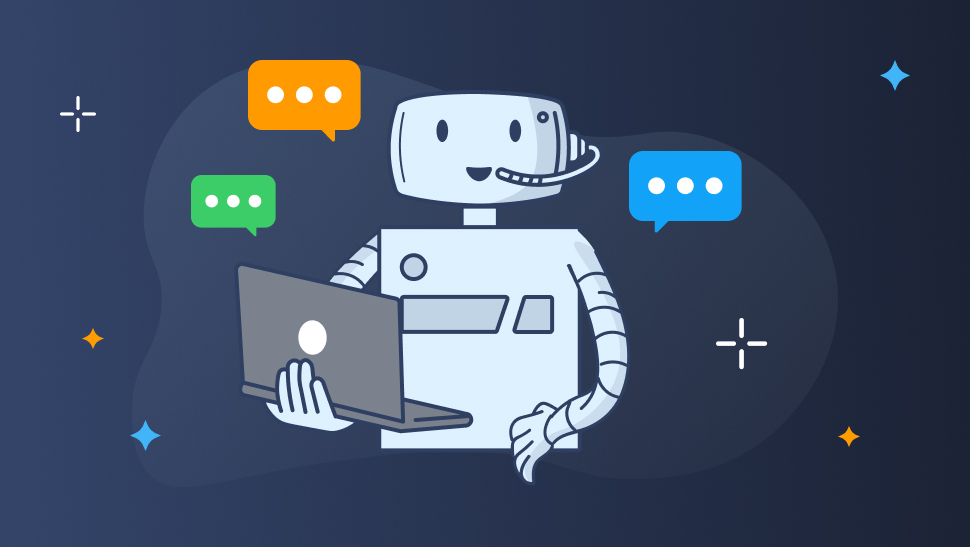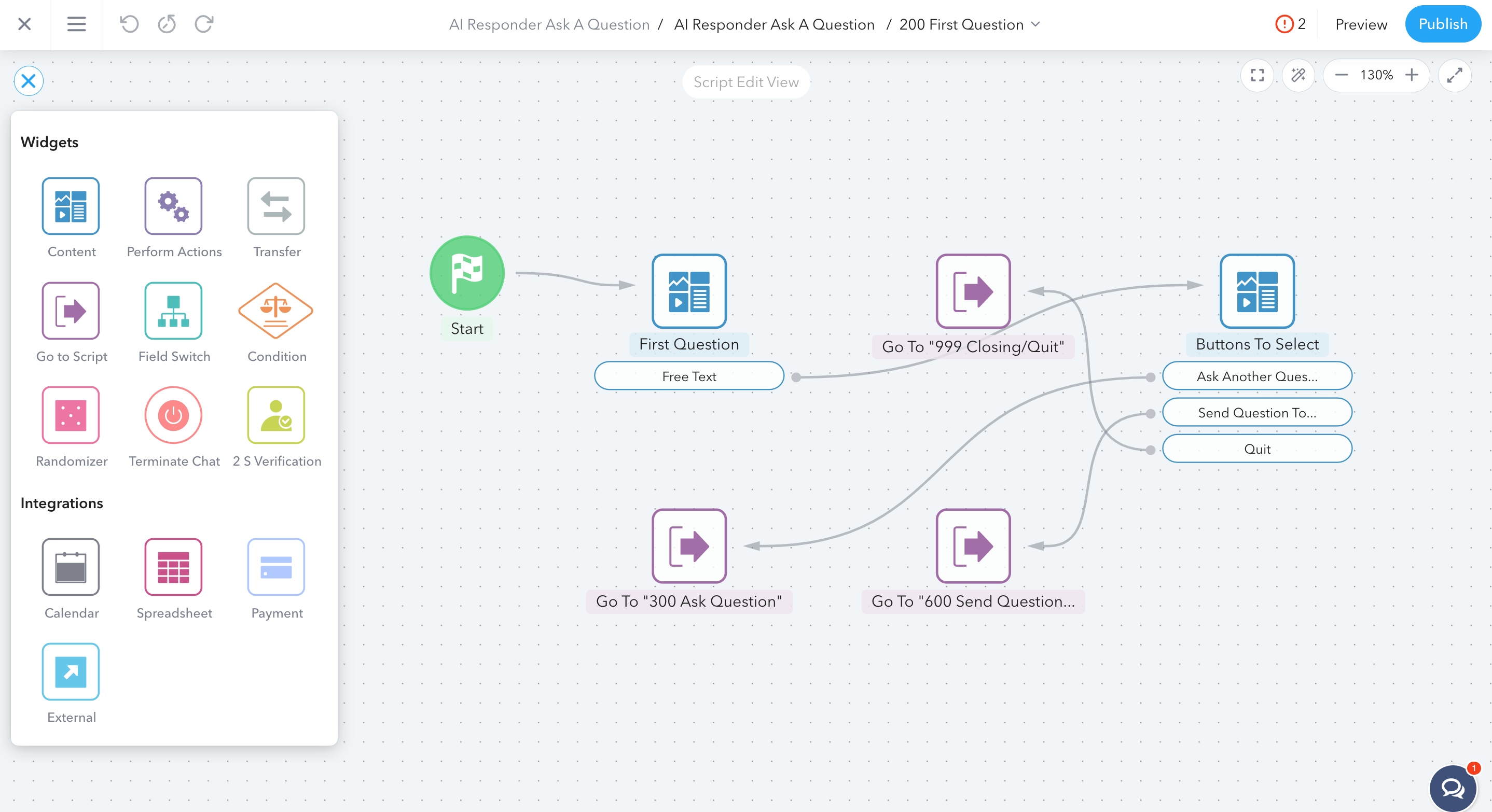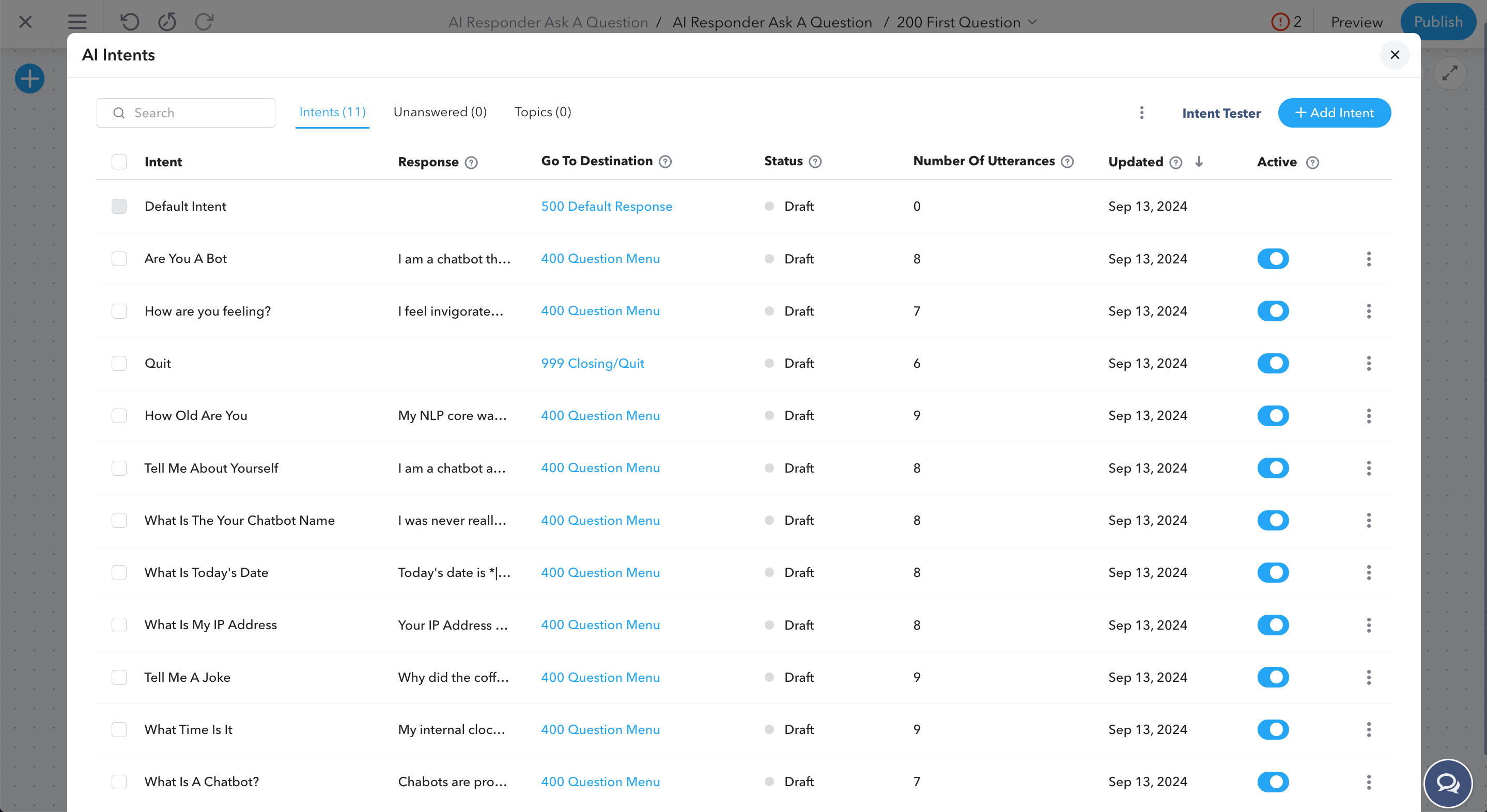Fact: 64% of consumers expect 24/7 customer service, and chatbots are the key to meeting this demand. Let's dive into the 15 crucial conversations your e-commerce chatbot needs to master to deliver an exceptional customer experience and drive sales.
Table of Contents
- 1. Product Inquiries
- 2. Order Tracking & Shipping
- 3. Returns & Exchanges
- 4. Troubleshooting & Support
- 5. Payment & Billing
- 6. Size & Fit Guidance
- 7. Personalized Recommendations
- 8. Lead Generation & Qualification
- 9. Promotions & Discounts
- 10. General Inquiries & Small Talk
- 11. Product Comparisons
- 12. Stock Availability & Backorders
- 13. Shipping Costs & Options
- 14. Account Management
- 15. Feedback & Suggestions
- Creating an AI-Powered Chatbot for E-commerce Is Simple
- Conclusion

1. Product Inquiries
Customers often have questions about products before making a purchase. Your chatbot should be able to handle various product inquiries, from simple questions about color and size to more complex inquiries about compatibility and technical specifications. Integrate your chatbot with your product catalog to provide real-time information, including inventory levels, pricing, and customer reviews.
- "Do you have this in blue?"
- "What are the dimensions of this product?"
- "Is this product compatible with [other product]?"
2. Order Tracking & Shipping
Once a customer places an order, they want to know where it is and when it will arrive. Your chatbot should be able to provide accurate and up-to-date order tracking information, including shipping status, estimated delivery date, and carrier details. Allow customers to easily modify their shipping address or request updates within the chatbot for a seamless experience.
- "Where's my order?"
- "When will my package arrive?"
- "Can I change my shipping address?"
3. Returns & Exchanges
Returns and exchanges are an inevitable part of e-commerce. Make the process as smooth as possible for your customers with a chatbot that can guide them through the steps, provide return labels, and initiate refunds. Your chatbot should also be able to handle common questions about return policies and eligibility.
- "How do I return an item?"
- "Can I exchange this for a different size?"
- "I received a damaged item. What do I do?"
4. Troubleshooting & Support
Technical issues and website glitches can frustrate customers and lead to abandoned carts. Train your chatbot to troubleshoot common problems, such as login difficulties, discount code errors, or slow website loading. If the chatbot can't resolve the issue, it should seamlessly transfer the customer to a human agent for further assistance.
- "I'm having trouble logging in."
- "My discount code isn't working."
- "The website is loading slowly."
5. Payment & Billing
Payment and billing inquiries can be sensitive and require prompt attention. Your chatbot should be able to provide clear and concise information about accepted payment methods, security measures, and billing policies. Give customers the ability to update their billing information or report payment discrepancies directly through the chatbot.
- "What payment methods do you accept?"
- "Can I update my billing information?"
- "I was charged twice. Can you help?"
6. Size & Fit Guidance
Choosing the right size can be a challenge, especially for apparel and footwear. Equip your chatbot with size charts, fit guides, and even AI-powered size recommendations based on customer measurements or purchase history. This helps reduce returns and exchanges, leading to happier customers and cost savings.
- "What size should I order?"
- "How does this fit? True to size or runs small?"
- "Do you have a size chart?"
7. Personalized Recommendations
Customers appreciate tailored suggestions that match their interests and needs. Train your chatbot to offer personalized product recommendations based on browsing history, past purchases, and customer preferences. This can boost sales and increase average order value by introducing customers to products they might not have discovered on their own.
- "I'm looking for a gift for my wife."
- "Can you suggest some products similar to this one?"
- "What are your bestsellers?"
8. Lead Generation & Qualification
Use your chatbot to proactively engage visitors and capture their contact information. Offer incentives like discounts or exclusive content in exchange for email addresses. Qualify leads by asking questions about their needs and interests, then pass qualified leads on to your sales team for follow-up.
- "I'm interested in learning more about your services."
- "Can I schedule a demo?"
- "What's the pricing for your enterprise plan?"
9. Promotions & Discounts
Keep your customers informed about current promotions, sales, and discount codes. Train your chatbot to provide details about ongoing offers and apply discount codes automatically at checkout. This helps drive conversions and creates a sense of urgency.
- "Do you have any current promotions?"
- "Is this product on sale?"
- "Can I get a discount code?"
10. General Inquiries & Small Talk
While handling transactional conversations is essential, don't forget to add a touch of personality to your chatbot. Enable it to answer general inquiries about store hours, location, or company information. You can even program it to engage in lighthearted small talk or tell jokes to create a more engaging and memorable customer experience.
- "What are your store hours?"
- "Where are you located?"
- "Tell me a joke!"
11. Product Comparisons
Customers often find themselves comparing similar products before making a decision. Your chatbot should be their go-to comparison tool, providing detailed breakdowns of features, highlighting key differences, and even offering personalized recommendations based on the customer's specific needs and preferences. By assisting customers in making informed choices, you can increase their confidence and boost conversion rates.
- "What's the difference between these two products?"
- "Which one is better for [specific need]?"
- "Can you compare the features of these items?"
12. Stock Availability & Backorders
Inventory management is crucial for e-commerce success. A chatbot that provides real-time stock availability information helps manage customer expectations and prevents frustration. If an item is out of stock, the chatbot can offer back-in-stock notifications or even allow customers to pre-order, ensuring they don't miss out on their desired products.
- "Is this item in stock?"
- "When will this be back in stock?"
- "Can I pre-order this item?"
13. Shipping Costs & Options
Shipping costs and options can significantly impact a customer's decision to purchase. Your chatbot should be able to calculate shipping costs based on the customer's location and chosen shipping method. Clearly communicate any free shipping thresholds and offer a variety of shipping options to cater to different customer needs and budgets.
- "How much is shipping to [location]?"
- "Do you offer free shipping?"
- "What shipping options do you have?"
14. Account Management
Simplify account management tasks for your customers with a chatbot that assists in creating new accounts, resetting forgotten passwords, and updating personal information. This self-service approach saves customers time and reduces the burden on your customer support team.
- "How do I create an account?"
- "I forgot my password. Can you help?"
- "Can I update my email address?"
15. Feedback & Suggestions
Customer feedback is invaluable for improving your products, services, and overall customer experience. Make it easy for customers to share their thoughts and suggestions through your chatbot. Ensure that their feedback is routed to the appropriate teams within your organization, demonstrating that you value their input and are committed to continuous improvement.
- "I have a suggestion for your website."
- "I'd like to provide feedback on my recent purchase."
- "How can I contact your customer support team?"
Creating an AI-Powered Chatbot for E-commerce Is Simple

Gone are the days when building a chatbot required extensive coding knowledge. With TruVISIBILITY Chat, crafting a powerful AI-powered chatbot for your e-commerce store is as easy as dragging and dropping.
Our intuitive, no-code platform empowers you to design any chatbot you envision, without writing a single line of code. Use our visual builder to effortlessly create conversation flows, incorporate engaging elements like images and videos, and even route customers to live agents for complex inquiries.
But what truly sets TruVISIBILITY Chat apart is its AI core. This advanced technology allows your chatbot to understand natural language, deciphering user intent even from the most unconventional phrasing. So, whether a customer asks "Where's my stuff?" or "Can you track my package?", your chatbot will comprehend their request and respond accordingly.

With TruVISIBILITY Chat, you have the flexibility to teach your chatbot to understand any intention you can think of. From product inquiries and order tracking to personalized recommendations and post-purchase support, your chatbot can handle any conversation you need it to, providing 24/7 assistance and enhancing the customer experience.
And here's the best part: You can start building your AI-powered chatbot right now, completely free! Simply sign up for a freemium TruVISIBILITY account, navigate to the Chat app, and let your creativity flow.
Conclusion
From product inquiries and order tracking to personalized recommendations and post-purchase support, we've explored 15 essential conversations that can empower your e-commerce chatbot to provide exceptional customer service and drive sales. By understanding and proactively addressing these interactions, your chatbot can become an invaluable asset, enhancing customer satisfaction, streamlining operations, and freeing your team to focus on strategic growth initiatives. Remember, personalization is key to unlocking the full potential of your chatbot.
And with TruVISIBILITY Chat, creating such a powerful and personalized chatbot is easier than ever. Our no-code platform empowers you to build AI-driven chatbots that understand natural language and cater to your customers' unique needs.
Ready to elevate your e-commerce business with a chatbot that truly understands your customers? Explore TruVISIBILITY Chat today and start building your free chatbot now!
Key Takeaways
- A well-trained chatbot can handle a wide range of customer inquiries, from product information and order tracking to troubleshooting and feedback.
- The 15 essential conversations an e-commerce chatbot should understand include product inquiries, order tracking & shipping, returns & exchanges, troubleshooting & support, payment & billing, size & fit guidance, personalized recommendations, lead generation & qualification, promotions & discounts, general inquiries & small talk, product comparisons, stock availability & backorders, shipping costs & options, account management, and feedback & suggestions.
- TruVISIBILITY Chat offers a no-code solution for building powerful, AI-driven chatbots that understand natural language and personalize interactions, ultimately enhancing customer satisfaction and driving business growth.
Want to receive more articles?
Sign-up for our weekly newsletter to receive info that will help your business grow



